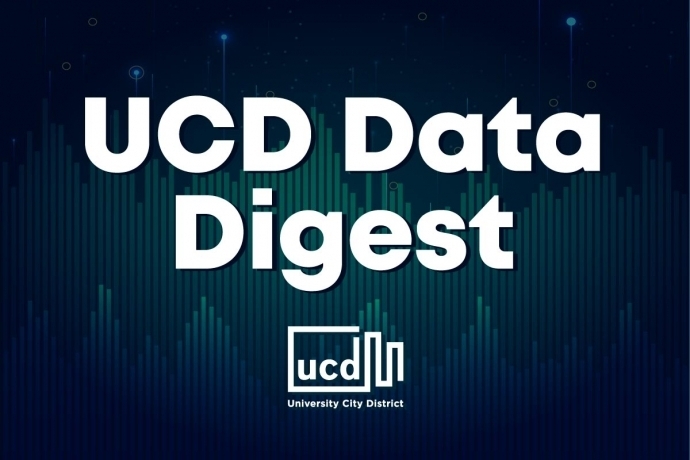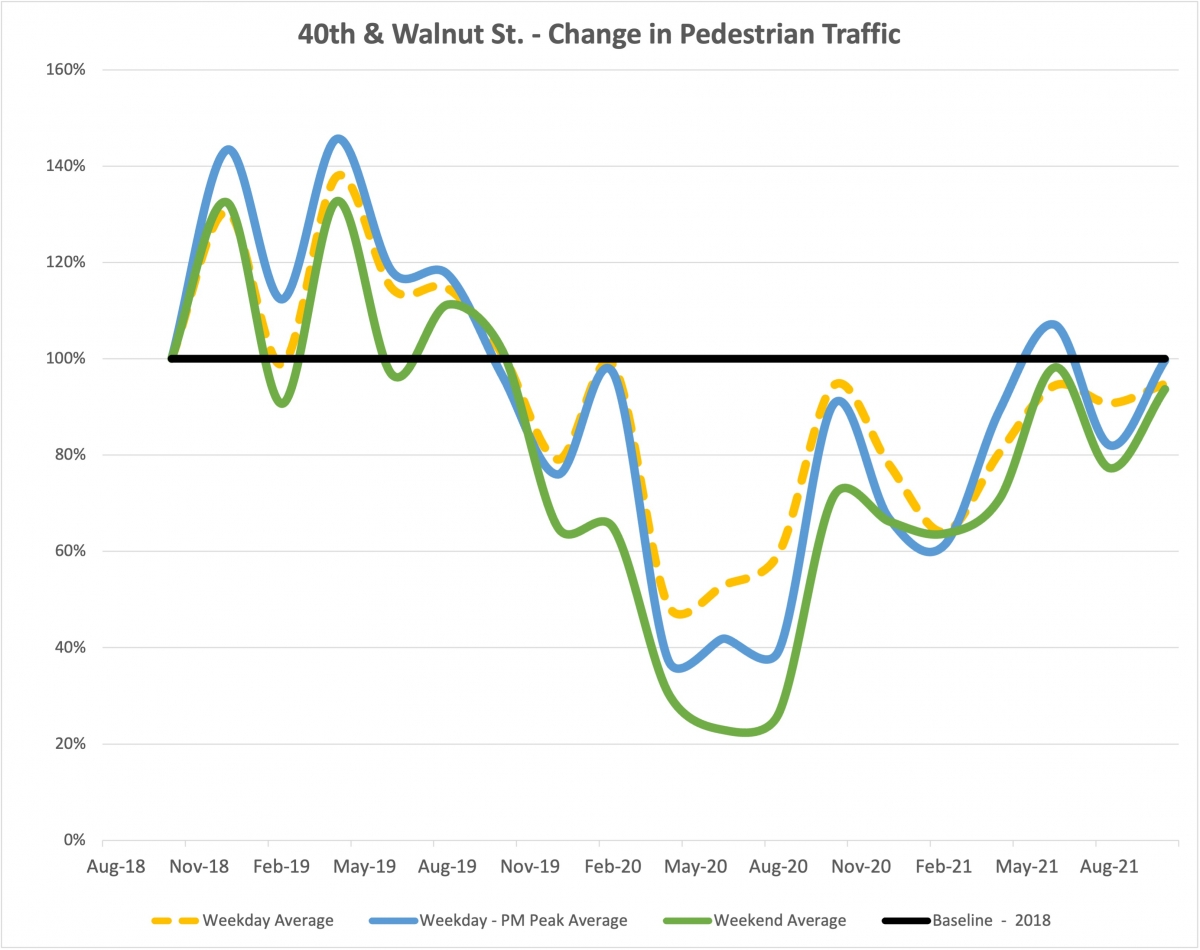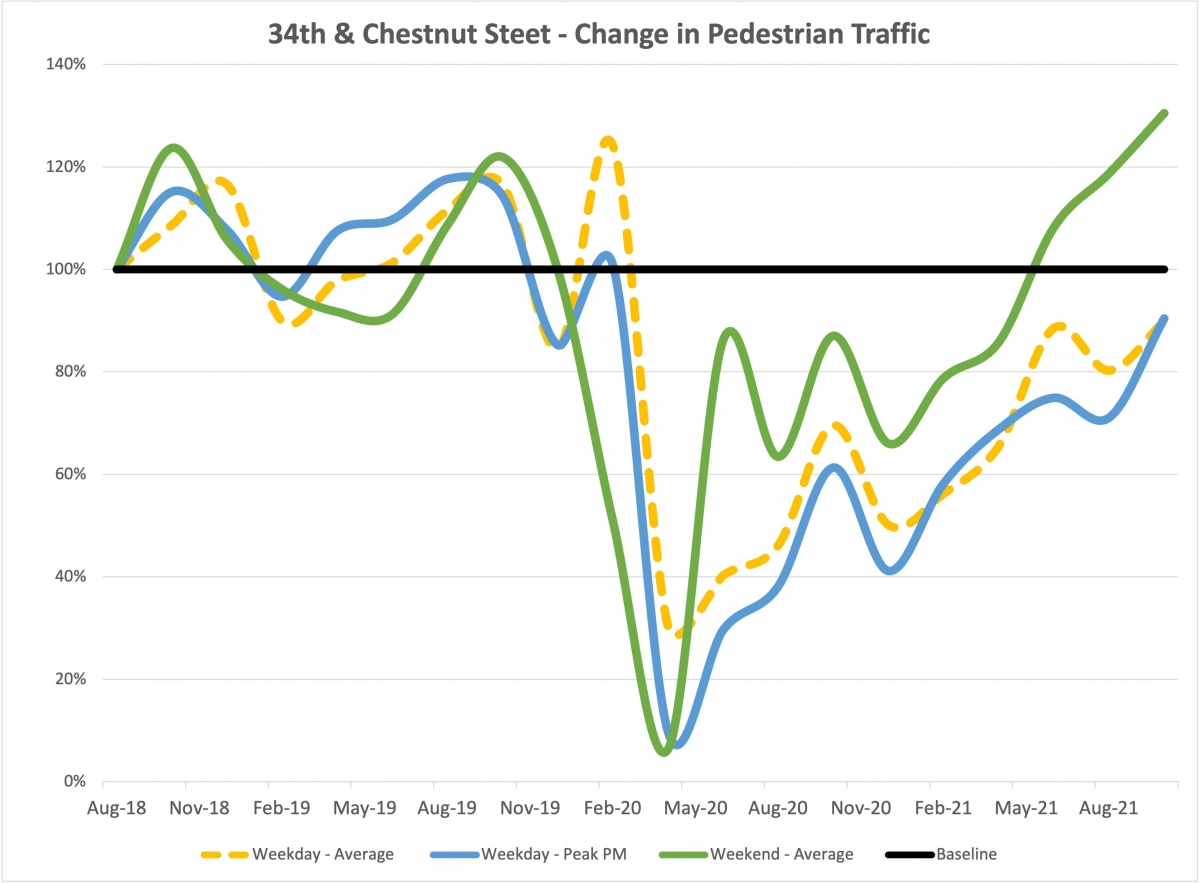
Visitors / Employees
UCD Data Digest: A Look Into the Rise in Pedestrian Levels

When schools sent students home in the spring of 2020, foot traffic around colleges and universities across the country plummeted. Local businesses, especially those that cater to the student population, felt the brunt of that impact. With pandemic-related supports ranging from the federal PPP program to local initiatives like the UCD Small Business Emergency Grant and Retail Restart Fund and a shift to takeout, outdoor dining, and mobile ordering, many of the businesses within our neighborhood have managed to survive through the strictest lockdowns. This fall, the streets have felt more lively with the return of students to local campuses, so we've decided to look at foot traffic in the neighborhood to see where pedestrian numbers are compared to pre-pandemic levels.
Throughout the COVID-19 crisis, we have monitored foot traffic across University City as a whole, along with counts at several key intersections. At 40th and Walnut on the edge of Penn’s Campus, foot traffic dropped off by more than half in March of 2020. Traffic was especially low on the weekends, dropping in the summer of 2020 to as low as 20% of its pre-COVID levels. When students stayed home for the fall 2020 semester, foot traffic remained low and stayed that way throughout the winter and into 2021.
As vaccine availability became widespread in the spring of 2021, people began to get back out on the street, with weekly averages touching pre-covid levels for the first time in over a year. Now that students have fully returned to campus, early data from fall 2021 shows the volume of foot traffic at 40th and Walnut getting back to expected levels once again.

A similar story played out at 34th and Chestnut, just off Drexel’s campus. After falling by more than 90% in the spring of 2020, pedestrian traffic has steadily increased and is approaching its pre-COVID baseline. While Penn operates on traditional semesters, many of Drexel’s programs operate on quarters, potentially explaining the steadier rise in foot traffic at this intersection.

This data is positive news for businesses that were able to make it through the ups and downs of the pandemic, especially considering many large-scale office buildings have not yet returned to full capacity. Our population of employees who stayed employed in our local hospitals and other frontline positions, residents supporting favorite neighborhood spots during difficult times, and a slow but steady return to pre-pandemic pedestrian volume bode well for continued retail success in the neighborhood.
About the Numbers: Data is sourced from Streetlight Insights and analyzed by UCD.


